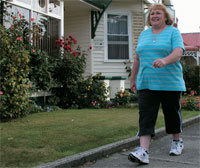8 Μαρτίου 2019 - International Women's Day - Physical Activity and Women
World Health Organization: WHO
Social inequality, poverty and inequitable access to resources, including health care, result in a high burden of noncommunicable diseases (NCDs) among women worldwide. Although women generally tend to live longer with NCDs than men, they are often in poor health.
BENEFITS OF PHYSICAL ACTIVITY FOR WOMEN
Regular physical activity can improve womens' health and help prevent many of the diseases and conditions that are major causes of death and disability for women around the world. Many women suffer from disease processes that are associated with inadequate participation in physical activity:
- Cardiovascular diseases account for one-third of deaths among women around the world and half of all deaths in women over 50 years old in developing countries.
- Diabetes affects more than 70 million women in the world and its prevalence is projected to double by 2025.
- Osteoporosis is a disease in which bones become fragile and more likely to break and is most prevalent in post-menopausal women.
- Breast cancer is the mostly commonly diagnosed cancer in women.
Physical Activity has also been associated with improved psychological health by reducing levels of stress, anxiety and depression. This is particularly important for women who demonstrate an incidence of depression that is reported to be almost double that of men in both developed and developing countries. It has also been suggested that physical activity can contribute to building self-esteem and confidence and can provide a vehicle for social integration and equality for women in society.
ΔΙΑΒΑΣΤΕ ΠΕΡΙΣΣΟΤΕΡΑ

